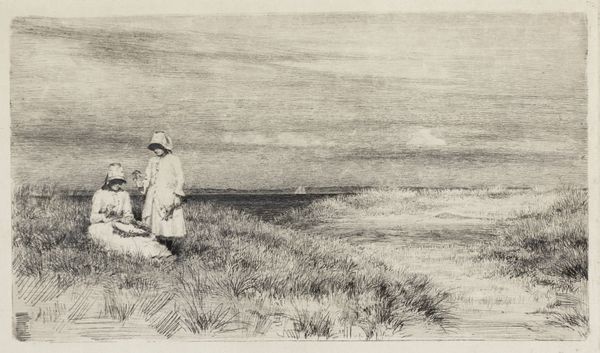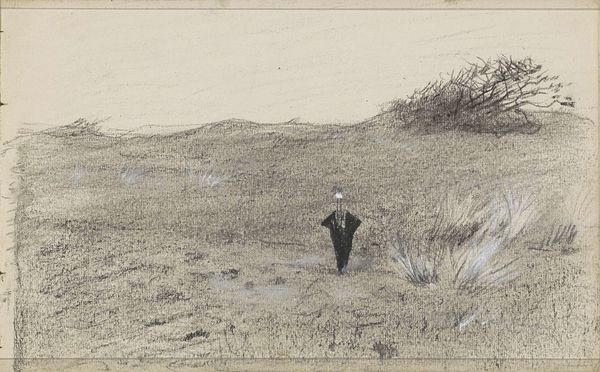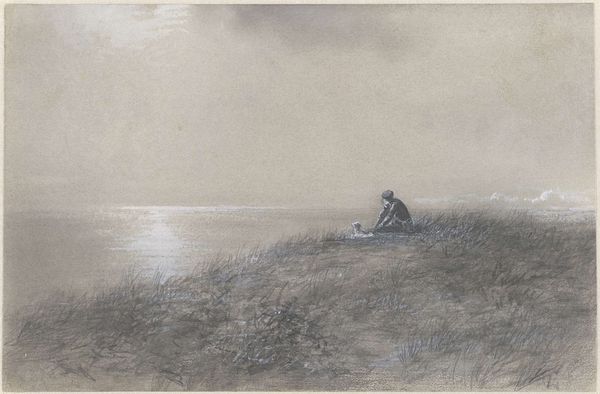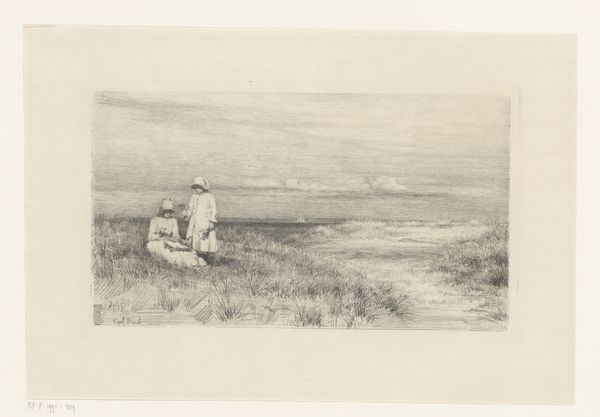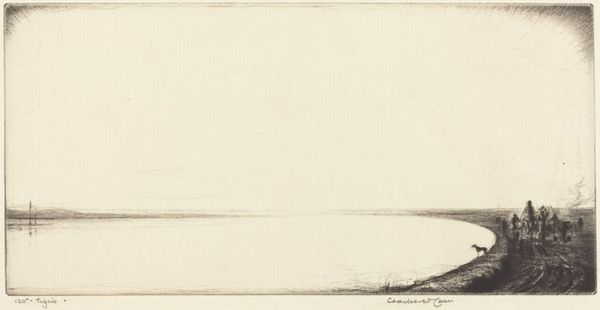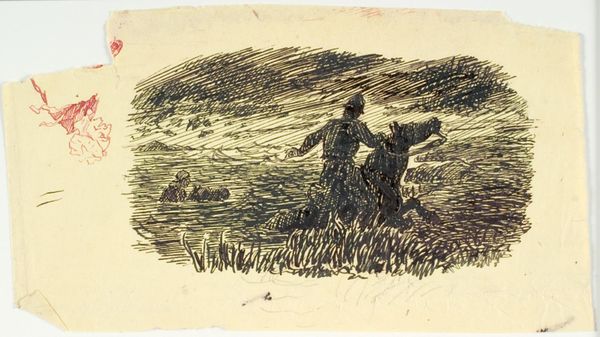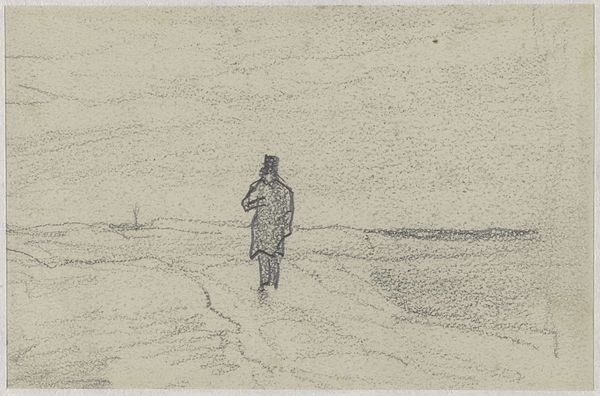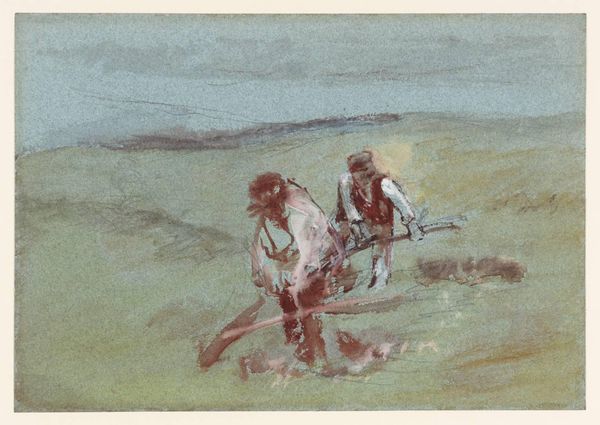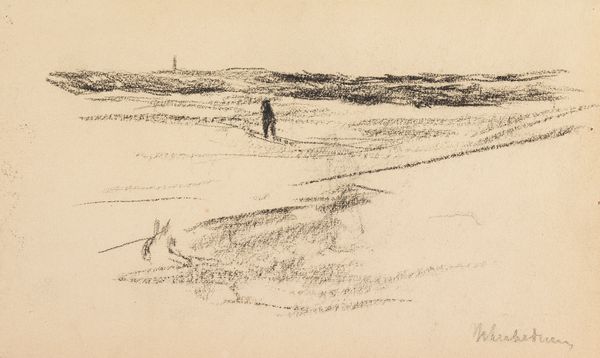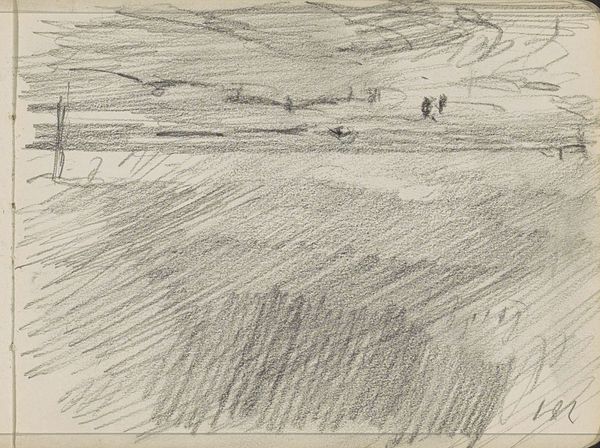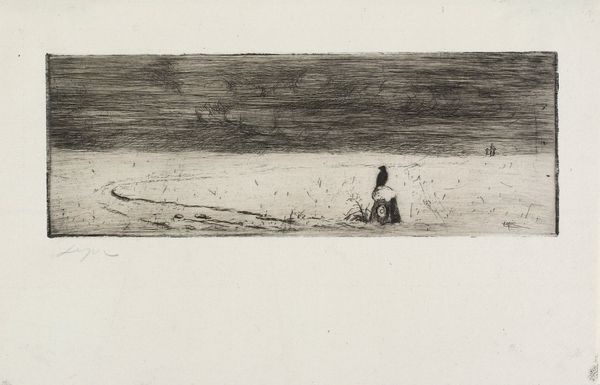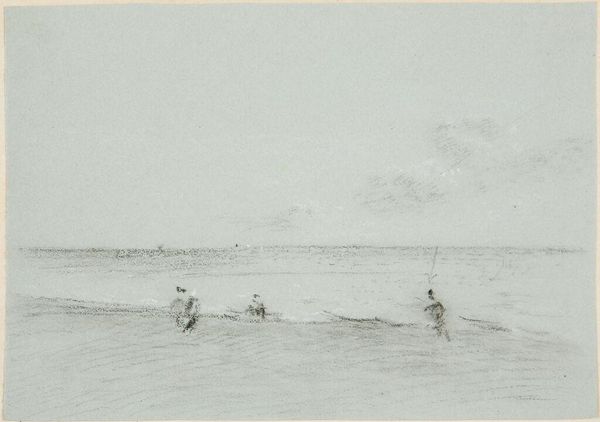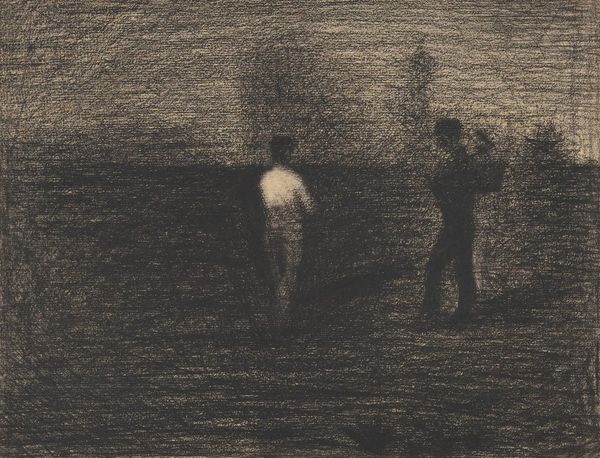
print, etching
# print
#
impressionism
#
etching
#
landscape
#
pencil drawing
#
genre-painting
Dimensions: 236 mm (height) x 368 mm (width) (bladmaal), 145 mm (height) x 248 mm (width) (plademaal)
Carl Bloch etched these Children by the Beach in the 19th century. The girls, set against the sea, are absorbed in a timeless act: weaving flowers. Consider the flowers themselves. Throughout history, from ancient Greece to the Renaissance, flowers have been potent symbols of fragility, beauty, and the fleeting nature of life. We see echoes of this in Botticelli’s "Primavera," where Flora scatters blossoms, a visual poem on renewal. But look closer—the act of weaving. It's not merely decorative. Weaving is a primordial, almost ritualistic gesture. Think of Ariadne's thread, guiding Theseus through the labyrinth, or Penelope's loom, a symbol of patience and hope during Odysseus's long absence. Weaving binds, connects, protects. The children, unconsciously, are participating in this ancient tradition. The act of weaving is a deeply human response to our own mortality, a desire to create something lasting from the ephemeral, engaging us on a subconscious level. This image resurfaces, evolves, and takes on new meanings in our own historical context, reminding us of the cyclical nature of human experience.
Comments
No comments
Be the first to comment and join the conversation on the ultimate creative platform.
